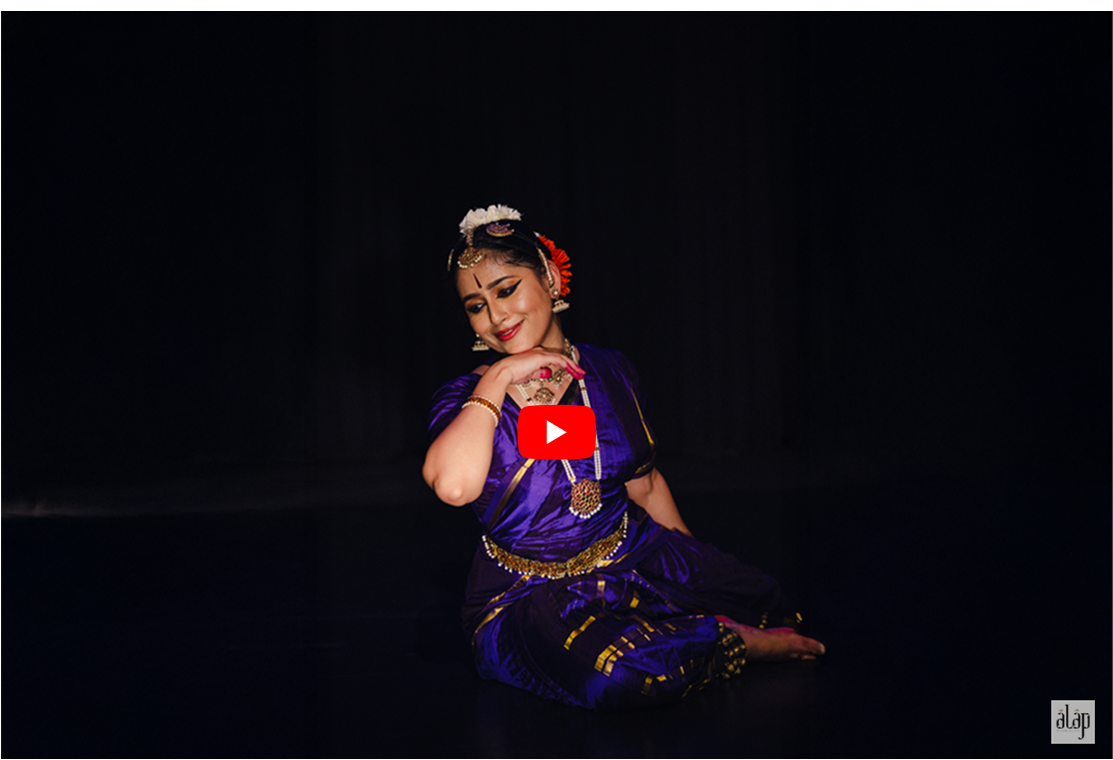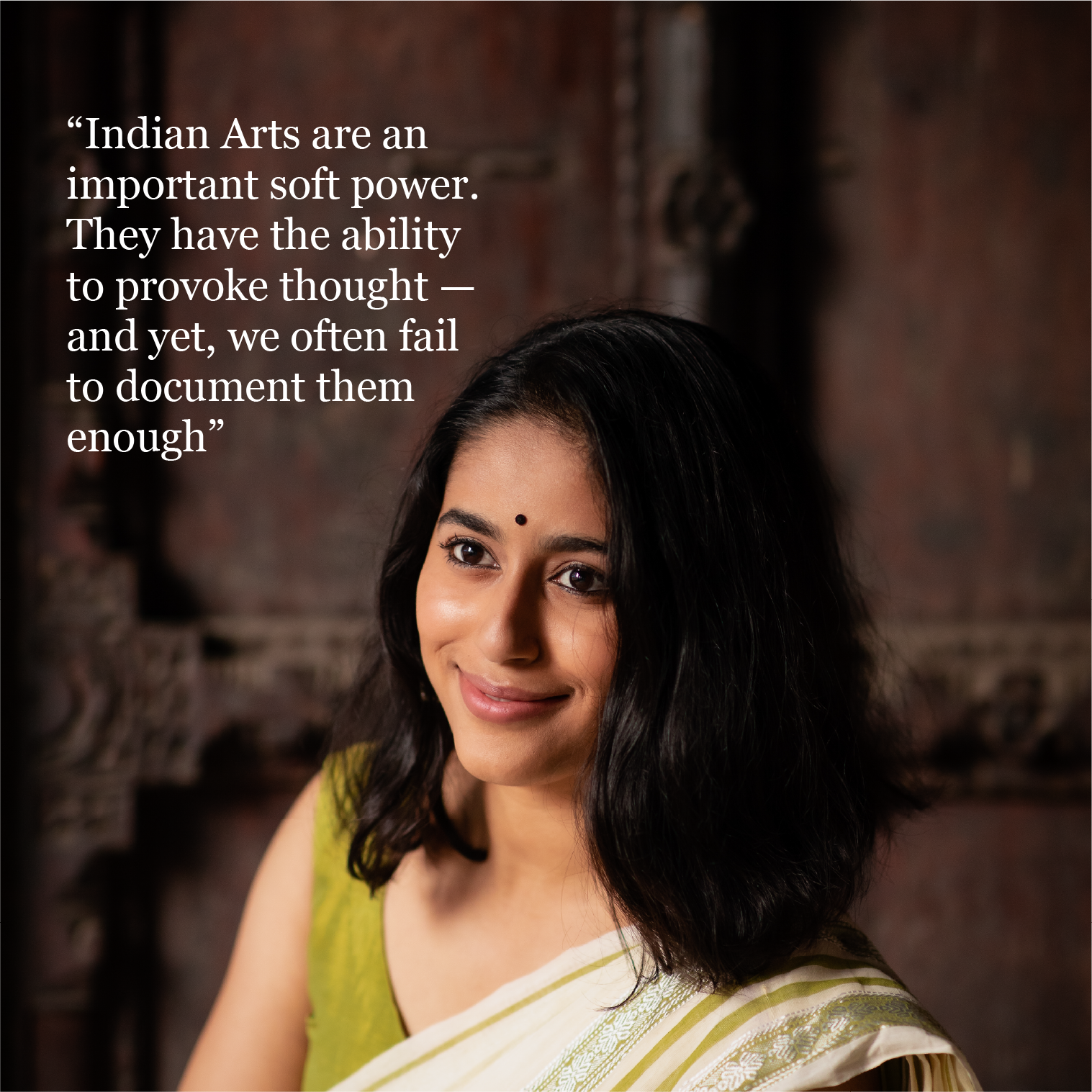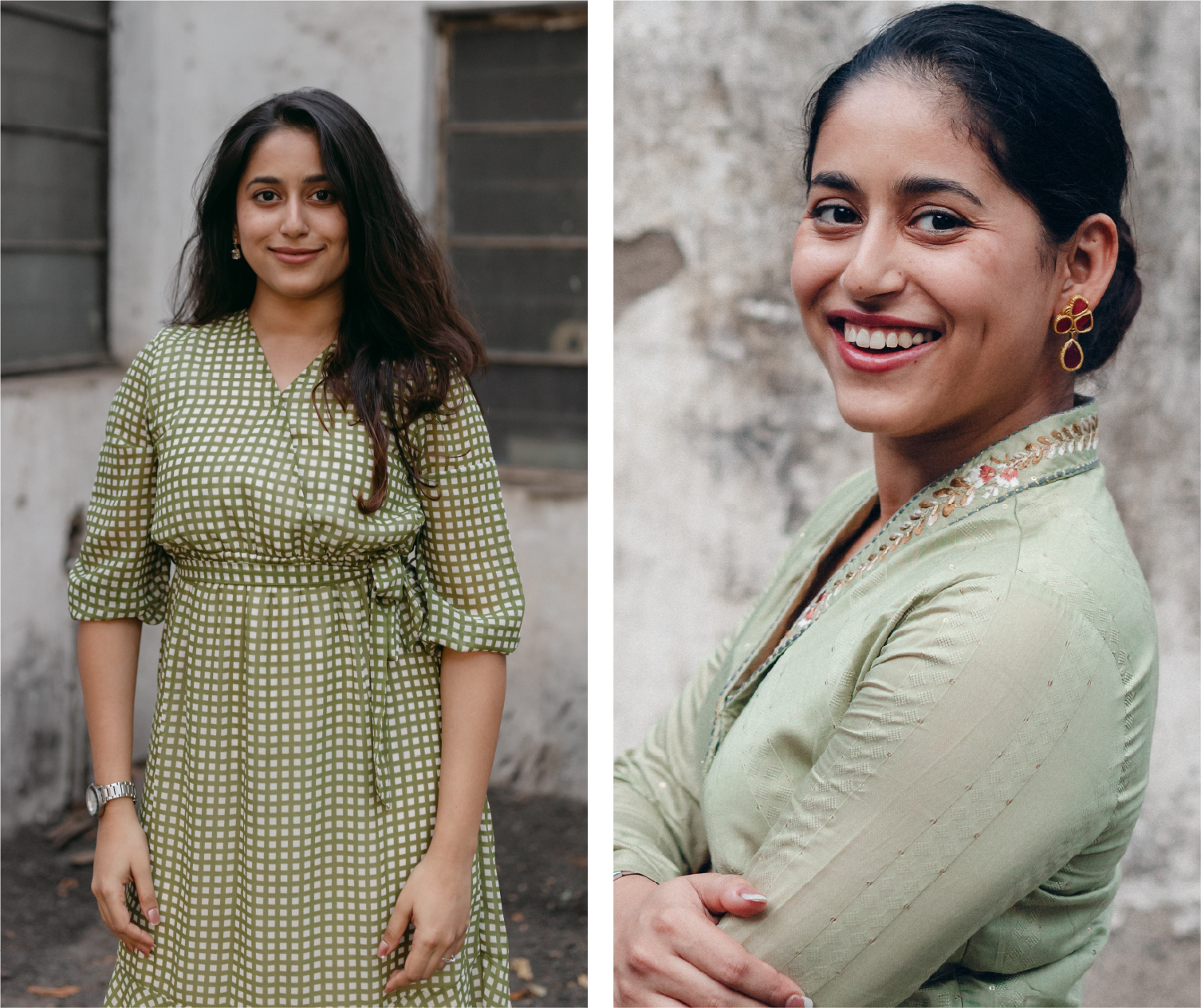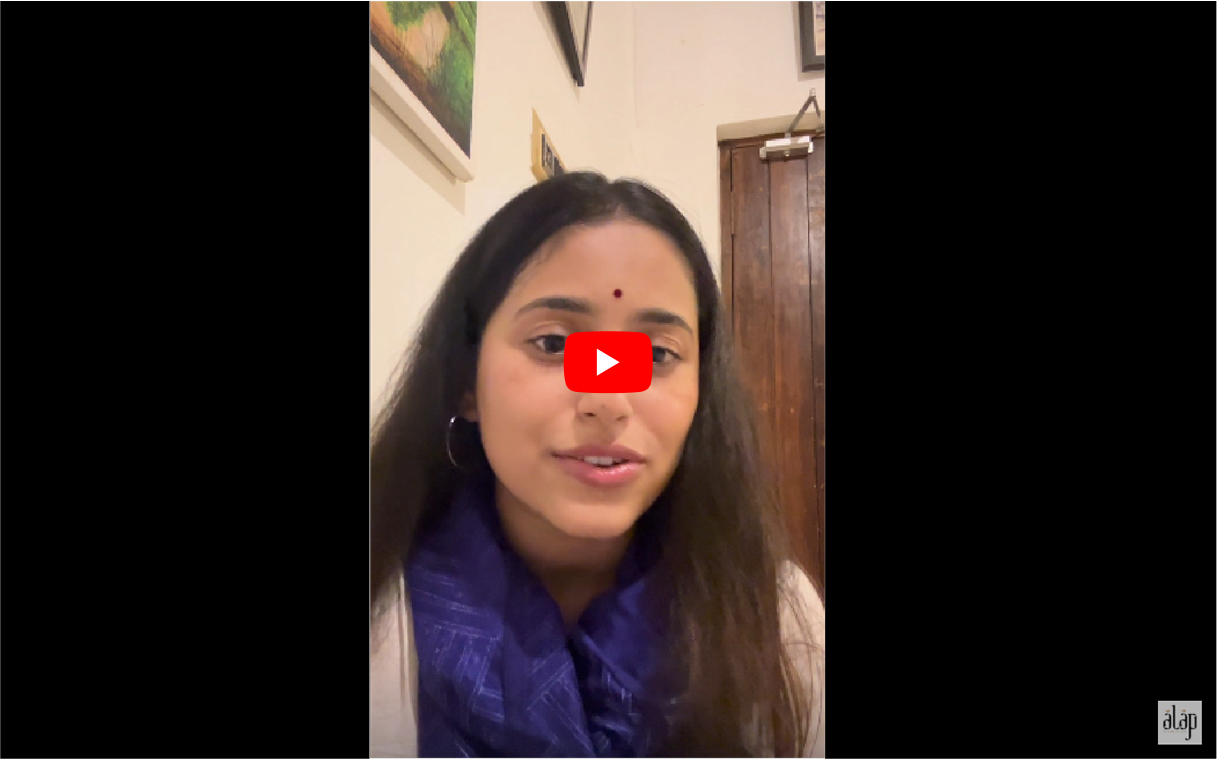Shruti Ranade
Bharatanatyam Artiste & Founder, Vyom Arts
“When you love what you’re doing, you internalize it…It’s more like having another room in your home”

You say you discovered freedom in dance. Can you elaborate a little on that?
I realised soon enough that I’m extremely uncomfortable, even hopeless, living inside the box that society deems fit. I had to come to my own understanding of what freedom actually means. As I grew — as a dancer and as a human — I understood that choosing my hard work, today, tomorrow, and every day after, is what freedom truly is. Dance allowed me to do that; not just to make that choice, but to adopt a creative lifestyle where I can learn, unlearn, and relearn — every single day.
You grew up in a rigorous Army background; how do structure and freedom co-exist in harmony within you and how do they manifest in your dance?
To be perfectly honest with you, structure and freedom don’t really co-exist — they exist on parallel tracks. Structure helps me wake up every day and consistently take the steps toward my practice. But what happens once I enter the space — that’s freedom. It takes time to find a balance, and that balance is deeply personal. It’s a process that allows both passion and questioning to co-exist. A comforting, synergetic dichotomy.
 An excerpt from a Trikala Jati from Varnam, Sumasayaka performed by Shruti Ranade composed by
Swati Tirunal and choreographed by Vaibhav Arekar
An excerpt from a Trikala Jati from Varnam, Sumasayaka performed by Shruti Ranade composed by
Swati Tirunal and choreographed by Vaibhav Arekar
How has your teacher Vaibhav Arekar inspired you to broaden your understanding of your body, movement and Bharatanatyam?
Learning from Vaibhav Sir has truly been pivotal for me. He is, by far, the most articulate,
dexterous, experimental yet deeply rooted artist I’ve known. He constantly encourages us to look
beyond the form and find the intention, whether in a Varnam, a Thillana, or an intense
production like Seasons.
But more importantly, Vaibhav Sir doesn’t just teach dance — he opens you up to a way of living.
To look at art even beyond dance. He passionately practices what he preaches — bringing in
inspiration from painting, sculpture, philosophy, theatre, and real life. He pushes us to bring
these elements into our dance, and that, truly, makes all the difference.
Does it help that you are a dancer in the context of an arts manager? How do you step in and step out of this role while working with your clients?
A big YES. I believe there’s a certain bond I can form almost instantly with artists because I understand the labor, the pros and cons that come with this life. Being an artist makes me sensitive to their concerns and empathetic while troubleshooting. I did struggle initially to switch on and off between roles. I don’t anymore. When you love what you’re doing, you internalise it. It’s no longer a jarring ‘switch-on, switch-off’ process. It’s more like having another room in your home. A space I walk into with love, do my bit, and leave the small light on even after I leave.

Talk to us about the 3Ps - Planning, Practice, Purpose - in the context of Vyom?
We work with a plethora of artists who need support managing their work, from music composers to
traditional dancers to arts organisations. Unlike other professions, artists have their work cut
out for them. The creative process is only one part of it. There’s also outreach, financial
planning, managing opportunities, and presenting themselves in the right light — all of which
are necessary for true growth.
At Vyom, we focus on people, the artists we work with and the audiences we try to gather for
them. The process, therefore, must be robust. Structure with freedom. No two blueprints are ever
the same because no two artists are alike. Tailor-made solutions define our
process.
As for products, Vyom doesn’t offer “products”. Vyom offers aid. We take care of the things
artists were never trained for.
How does one measure impact in the context of an artiste and in the context of arts management? What is the impact you are looking for?
This is a question I truly value because we don’t talk about impact enough in the arts ecosystem,
especially from the artist’s perspective. Indian arts are an important soft
power. They have
the
ability to shift perspectives, and provoke thought — and yet, we often fail to document how
deeply they touch lives.
I see impact in two ways. First, the tangible: post-performance feedback, outreach
initiatives,
audience segmentation, and small but meaningful metrics that track change or inspiration. These
are crucial in a world that doesn’t always speak our language of intangibles.

Then there’s the intangible: the deeper, slower work. For me, it’s in the well-being
of the
artists that I support. When I see them fully immersed in their creative process, free from
logistical worries, and taking flight on their own terms, I know something has shifted. That,
too, is impact.
Ultimately, I look for moments of clarity - a shift in thought,
a new daily
practice adopted by a rasika, or an artist finally feeling ssupported enough to soar. That’s
where real impact lies — both seen and unseen.
You write a special column, Ta Ka Dhi Mi in the Pudhari magazine with the objective of introducing Bharatanatyam to the lay audience. What was your intent behind writing this column?
Although Indians use gestures daily to communicate, it’s very common to hear: “I didn’t understand the dance, but I loved the grace and strength.” That irks me. Not because they don’t understand, but because - although we come from the same country and share similar cultural histories — some of us lost our comfort and closeness with the arts, while others grew up with dance studios and sculptures at home. There’s a disparity.
 Shruti Ranade on her intent and vision behind writing columns about Bharatanatyam in the
Pudhari magazine
Shruti Ranade on her intent and vision behind writing columns about Bharatanatyam in the
Pudhari magazine
My audience was either those who liked watching dance but didn’t understand it, or those who had no clue at all , or both. I wanted my column to serve as an entry point — a window of accessibility. Pudhari is one of Maharashtra’s oldest and most affordable newspapers, reaching a diverse readership. It ticked all the right boxes for me: addressing disparity, providing an entry point, and reaching the right audience.
